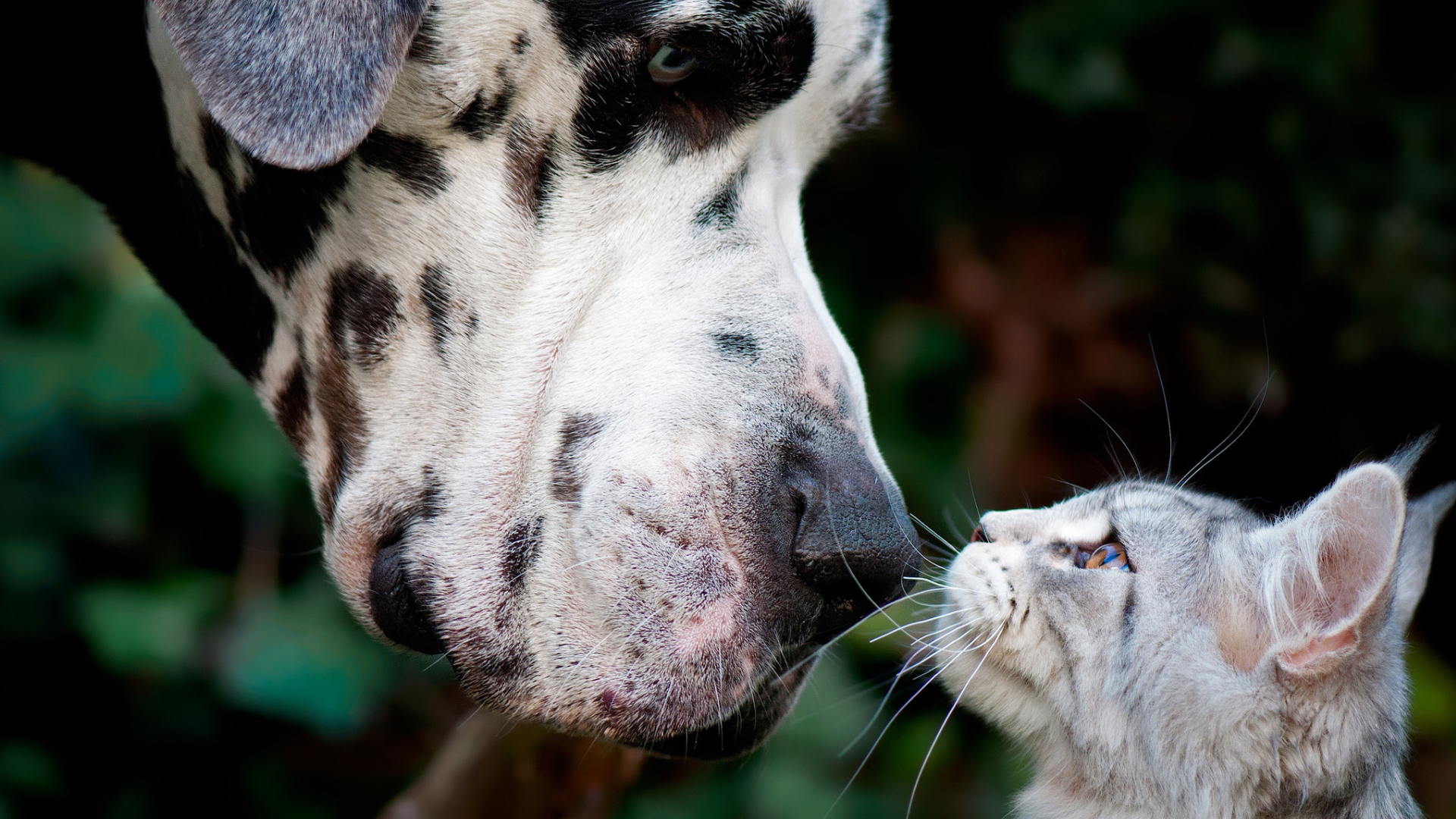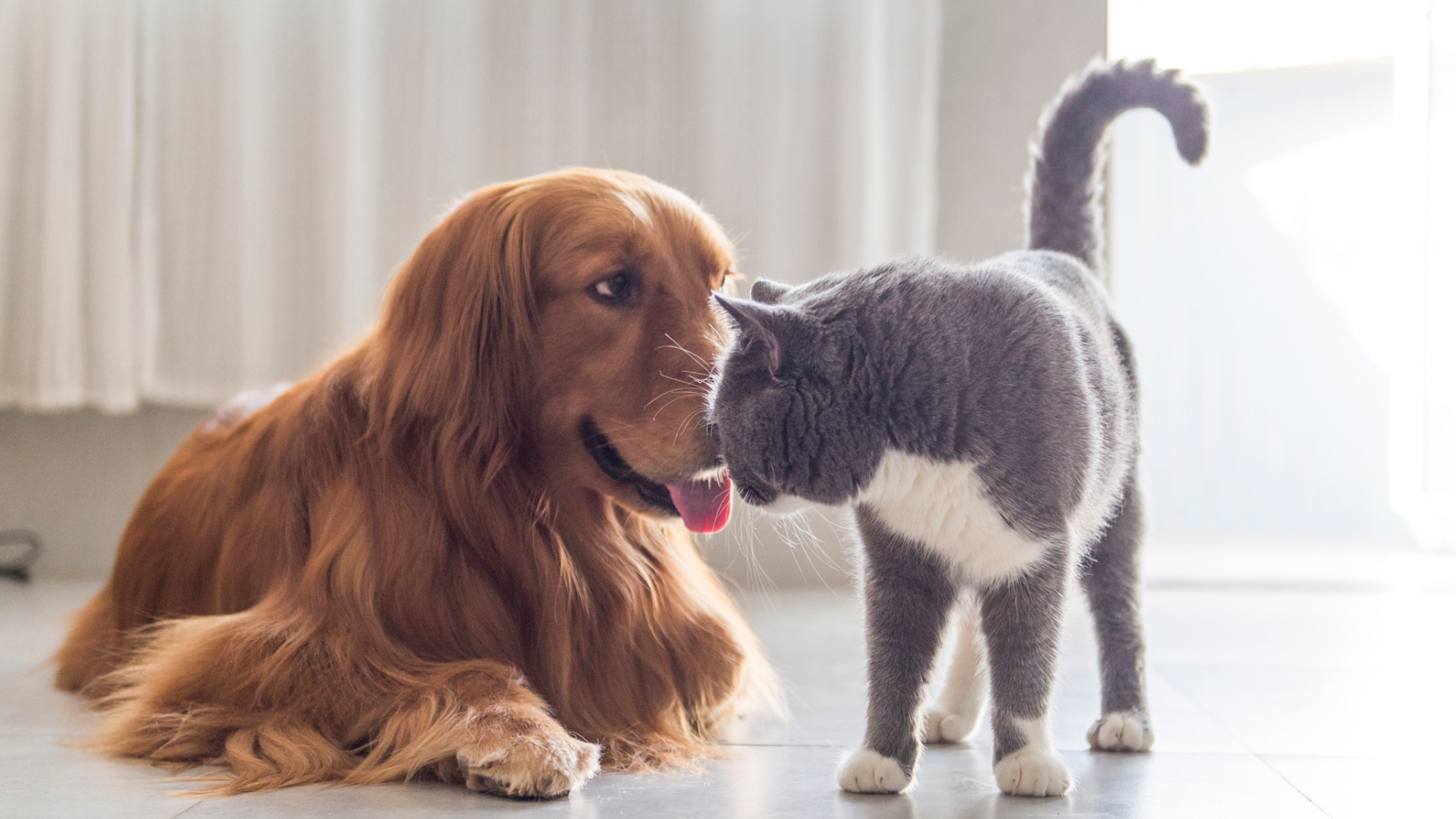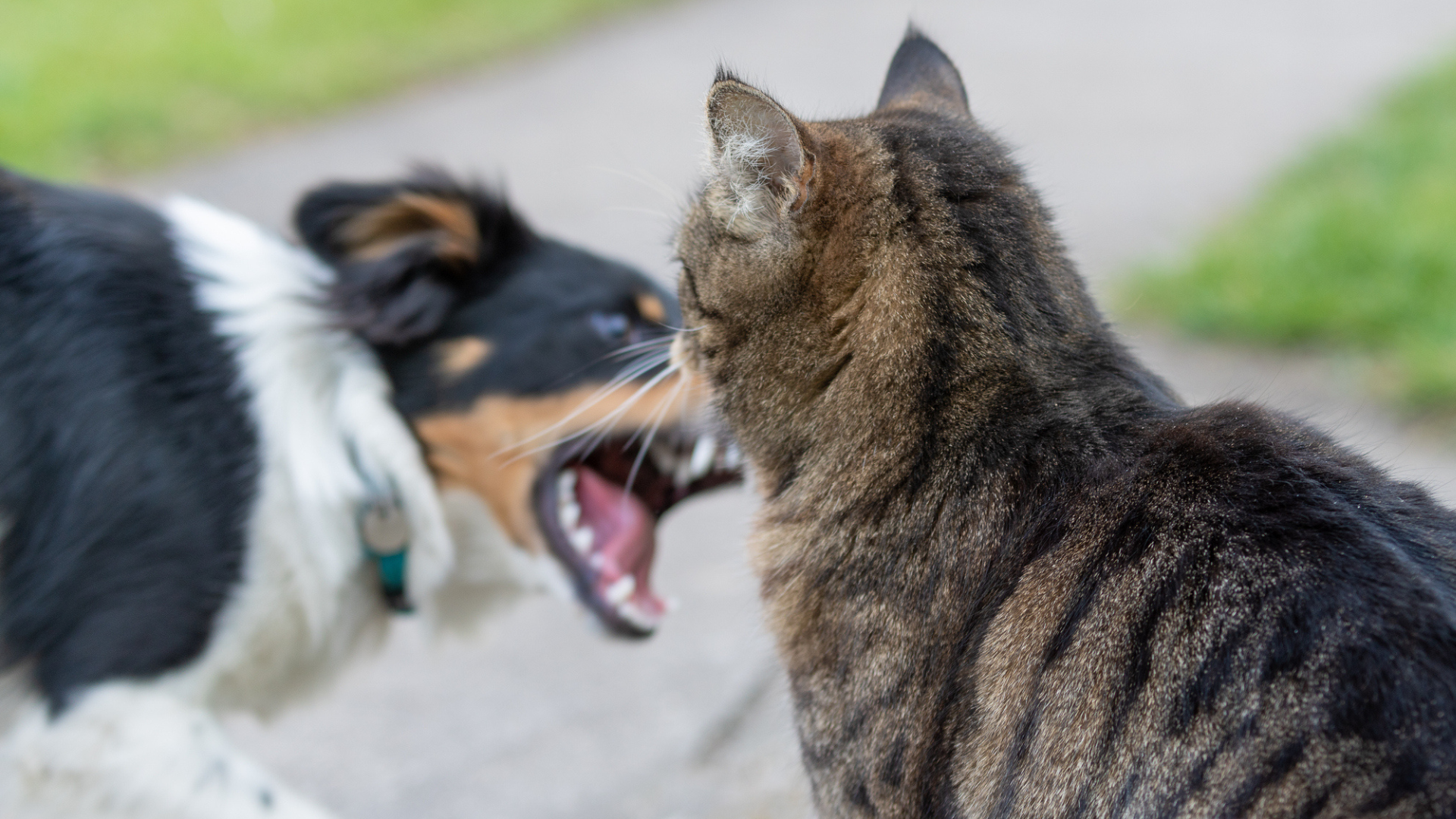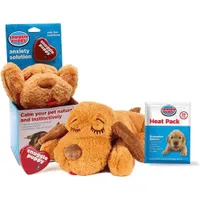Should I let my dog play with my cat? How to tell if they’re fighting or just playing
A behaviorist answers the common question: 'Should I let my dog play with my cat?'

If you're lucky enough to have a dog and a cat, then you might find yourself questioning, 'Should I let my dog play with my cat?'
Knowing if a dog is over-the-top enthusiastic or aggressive towards a cat can be tricky. Our job as pet parents is to keep the peace and spot the difference between genuine play and a bit of a tiff.
As a qualified dog behaviorist, I've worked with families who were unsure about introducing cats and dogs or wanted help with managing the friction in the house. For over-excitable dogs, I've often recommended the best dog toys to help distract attention from chasing the cat.
Sometimes, it takes time for cats and dogs to adjust to each other's differences. Other times, a cat doggedly decides there is no way he will befriend a lowly dog and remains aloof. However, when these two lovely creatures befriend each other, it's a beautiful experience for them and us.
Should I let my dog play with my cat?
There are many things to consider before allowing your dog to play with your cat. Introducing a new cat into the home can be easier than bringing a new dog into your cat's space. Our feline friends do tend to think they own our home and us.
Another consideration is how big the dog is. A German Shepherd dog is more likely to cause your cat to be alarmed than a Chihuahua puppy.
Introductions should be gradual, rather than letting the two loose in a room together and hoping for the best. It might be helpful to read our feature on dogs and cats living together.
Get the best advice, tips and top tech for your beloved Pets
Once they are comfortable around each other, it's vital to spot the telltale signs of whether your furry friends are playing or fighting.

Signs they're playing
1. Was there an invitation to play?
Dogs initiate play with a friendly bow. They lower their chest to the ground. Their mouth is usually open in a grin, and you'll spot a wagging tail. Cats may roll onto their back or initiate a play bow. Either way, it shows they feel safe to be vulnerable.
2. They play in turns
Once your cat and dog initiate play, they will take turns to continue playtime. They may alternate between who chases who. Your dog may make excited noises, and your kitty may bat the dog with a paw (with claws retracted). If they get on, your cat may even allow your doggo to mouth him and seem to enjoy that.
3. They respect each other's responses
If one becomes a bit exuberant and the other one squeals, the perpetrator may make appeasing signals to show they didn’t mean to get too rough. A dog may lie down and gently lick the cat, and your feline may rub against the dog to show goodwill.

Signs they're fighting
A dog can harm a cat, but make no mistake; cat bites can be serious, and your dog could come off worse. If you see even one of these signs, separate the cat and dog before it escalates.
Introductions should always be gradual and monitored carefully. If you're unsure about spotting the warning signs, read our features on dog body language and cat body language.
1. Your cat's tail becomes raised and starts thrashing
It's a warning sign to the dog to back off or else.
2. The cat hisses
Your cat arches their back and hisses. You may notice their claws are out if they swipe at the dog. Their fur stands up and their ears are back.
3. One tries to hide or run away
It could be the dog if it's small or a puppy, but it is more likely to be the cat.
4. The dog barks and lurches at the cat
Loud barking, raised hackles, chasing, and not respecting the cat's space.
What do I do if my cat and dog start fighting?
Hopefully, if you're prepared, it never gets to that situation, but if it does, never step in between your cat and dog or try to break them apart with your hands. In the heat of the moment, either of your furry friends could accidentally bite you.
Avoid yelling, as that can exacerbate the situation. Stay calm. Make a loud noise to distract the fighting pair, such as a dog whistle or clapping your hands.

Will a cat and dog eventually get along?
Most times, cats and dogs can learn to live together. It can take weeks or months for both to build trust. The best scenario is to teach your dog to ignore the cat. Some fluffers immediately like each other and start cuddling and playing, but most need time to adjust.
The best advice is to take things slowly. To ensure your cat's safety, it can help to put your furry friend in the best cat carrier in the same room as the dog. Keep sessions short, no more than ten minutes.
Once they start ignoring each other, choose a safe place in the house with somewhere high the cat can jump. Put the dog on a leash so you have control. These sessions can be longer, and the goal is to get to the point where your cat and dog ignore each other and their body language relaxes.
Monitor progress and take baby steps towards getting your dog and cat to like each other and start playing.

Can I leave my cat and dog alone in the same room?
Never leave a dog and a cat alone if it's a new relationship. Even if you've worked through a steady introduction progress and all seems to be going well, remember that up to that point, you have been present.
When you leave them alone, they navigate different dynamics without your presence. If you go out, it's best to be cautious and separate your furry friends. You can usually leave them together if they're old buddies who have cohabitated for many years. However, always ensure your cat can jump to a safe zone if needed.
If you want to learn more about playing with your cat, you'll love our feature on cat play. For tips on how to play with a dog, check out this expert's guide. Or, find out the answer to, 'Can dogs play with cat toys?'
Snuggle Puppy Heartbeat stuffed toy
Your puppy might feel anxious in new situations — a calming aid, like the Snuggle Puppy, will help him feel happier.

Jan is a dog behaviorist and writer living in the Cotswolds, UK. She qualified as a dog behaviorist in 2012 after training with Sarah Whitehead, a Certified Clinical Animal Behaviorist with a MSc in Animal Behavior. Jan has shared her life with dogs for over fifty years and is fascinated by behavior. She enjoys helping people better understand their dogs to develop a deep bond and enjoy time together. Jan particularly enjoys working with impulsive and reactive dogs as her legacy from helping Poppy, her rescue Weimaraner cross overcome fear reactivity.

